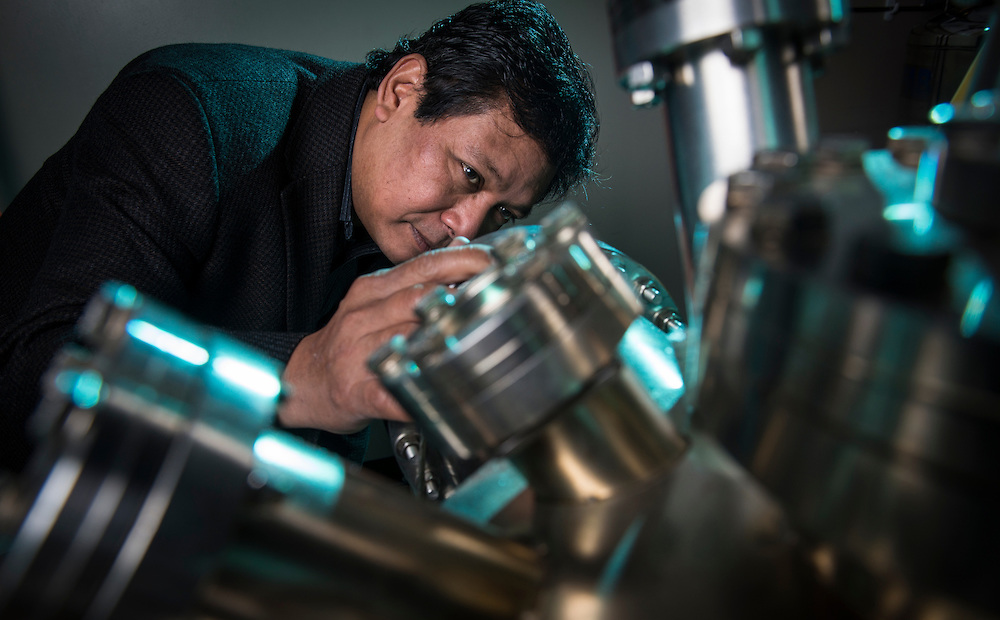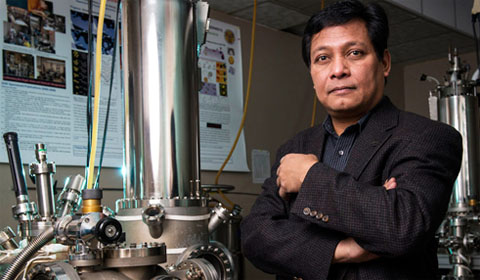
Dr. Saw-Wai Hla
By Amanda Biederman
NQPI editorial intern
Ohio University Professor of Physics & Astronomy and Nanoscale & Quantum Phenomena Institute member Saw-Wai Hla recently received a U.S. patent for the development of an ultra-thin superconductor.
Hla holds the patent with former visiting OHIO Professor Abdelrahim Hassanien and former graduate student Kendal Clark, now an assistant professor of Physics at Central Methodist University. The superconductor is exhibited by (BETS)2GaCl4 , a compound with unique properties.
In superconductors, unlike in metals such as copper or semiconductors such as silicon, electrons move without resistance. As a result, superconductors produce negligible amounts of heat, and currents are not susceptible to energy loss during transmission.
“Nowadays, we are concerned about power and energy,” Hla said. “Power plants generate a lot of power, but along the trans-mission lines to our homes, we’ve lost the power along the way. The power is wasted, as heat, due to the resistance. So supercon-ductors are very important in technical terms.”
Hla said superconductors have become important due to the development of small electronics that are susceptible to current resistance. He compared electron flow in a material to flowing water in a channel; as the channel becomes smaller, water flow is hindered. This, Hla explained, is why laptops are often warm to the touch, while desktop computers generally remain cool.
BETS acts as the superconductor and GaCl 4as the electron acceptor. Hla said that, unlike in metals or semiconductors where single electrons move individually, superconductors transmit electrons in pairs. As a result, the electrons can avoid obstacles and move coherently, facing no resistance.
The superconducting properties of crystalline (BETS)2GaCl4 were previously known. However, Hla’s group has now demonstrated that the material can function as an ultra-thin superconductor. The compound self-assembles to form a long wire that is one molecule thick, about the thickness of a single amino acid. Hla said the single molecule can be synthesized cheaply and efficiently.
Hla said ultra-thin superconductors provide greater resolution and more precise measurements in novel electronic devices, compared to crystalline superconductors. For example, the technology may help improve brain imaging techniques, rendering higher resolution images than those available with current devices.
Additionally, ultra-thin superconductors may be used one day in quantum computers. Quantum computers employ a method known as entanglement to allow for communication between devices, regardless of physical distance.
“It’s a little farfetched, but it might be there,” Hla said. “People say (the quantum computer) will be the next revolution in technology…. This particle knows what the other particle is doing no matter what distance there is between them. Quantum computers are extremely powerful.”



















Comments